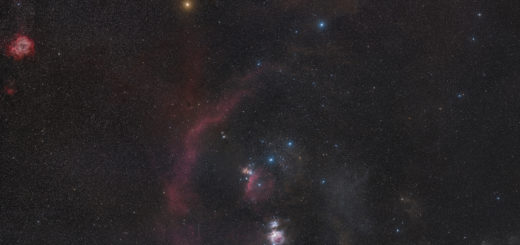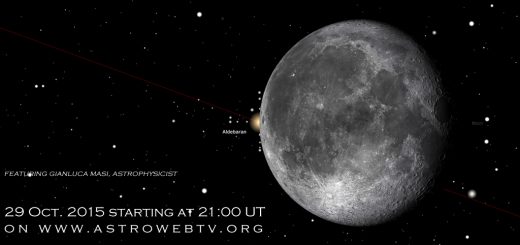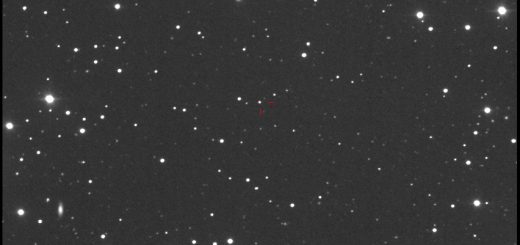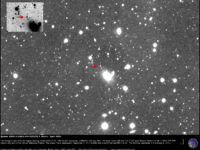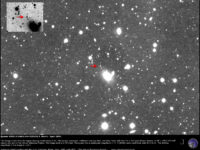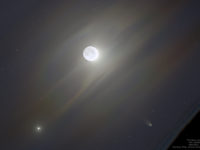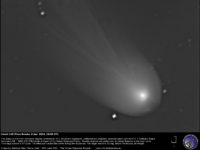The Barnard’s Star: a runner in the sky
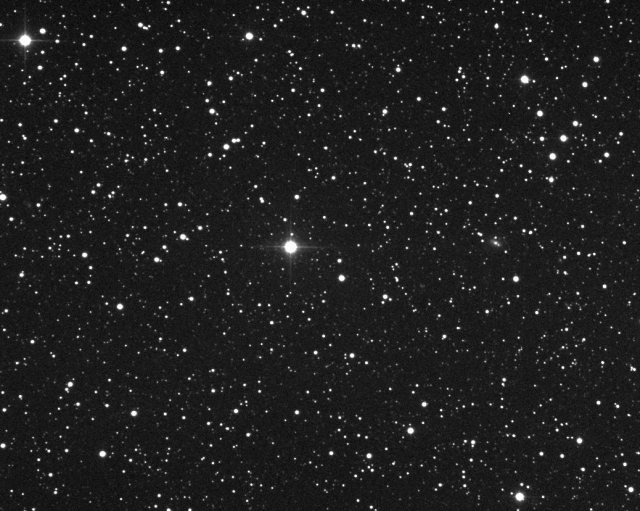
The Barnard’s Star is the brightest object in the animation, which show how much it moved from 1991 (star on the right) to 2014 (star on the left). Click on the image for a larger version.
A quick glance to the starry sky will often leave the casual stargazer with the impression that nothing is changing up there. Since the ancient times, man was captured by the motionless, fixed stars, almost suggesting something eternal, compared to the wandering lights he called “Planets”, from the Greek ἀστὴρ πλανήτης (astēr planētēs), that is “wandering star”. The huge distances involved there are the main reason for that apparent quietness.
But this is just an impression: behind that apparent crystal sky, there are plenty of rhythms, motions and variations, not only because of the close Solar System objects (we are not surprised to see them in motion, as they are “close”, think of the Moon), but stars are doing crazy things out there. You have a plethora of variable stars, continuously changing their brightness – sometimes in a very dramatic way – but there are also stars changing their position quite fast… if “fast” for you means something you can spot with a telescope after a few months. Among the naked eye stars, the bright Arcturus, alpha Bootis and the 4th brightest star in the sky, is certainly an outstanding case: in about 1000 years it moves of an angle as a full Moon disk (0.5 degrees). But you might not have enough time to enjoy that.
So, you are probably still asking which star is apparently the fastest out there and if its motion can be recorded in the human lifetime. You are lucky, there is a positive answer, with several stars making possible for you to easily see – with a telescope – a star moving against the more distant starry background while you are alive. But if you want to see the most spectacular one, here it is the queen: the Barnard’s Star.
This “obscure” star is not visible to the naked eye: it is a mag 9.5 star, placed in the constellation of Ophiucus, much smaller – both in mass and diameter – than our Sun: actually, it is a red-dwarf star. Also, after the triple system of Alpha Centauri, the Barnard’s Star is the closest, the closest in absolute above the celestial equator. Furthermore, for some time astronomers claimed it could host a planetary system, never confirmed.
The star was named after the american astronomer Edward Emerson Barnard, who noticed in 1916 its more than 10″/year, high proper motion (among other things, Barnard spotted emission lines in the light of Novae, thus suggesting they were an explosive event). For sure, this star is amazing, accessible with small telescopes, which can firmly record, say in the timescale of one year, its proper motion.
At Virtual Telescope we wanted to do exactly this, so on 5 June 2014 we took an image of the star with the 17″ robotic unit, then we compared it with a plate from the Palomar Observatory Sky Survey (POSS), taken almost exactly 23 years before, in June 1991. The two images were properly aligned and used in the animation. No further comments are necessary: the star is jumping back and forth, of such an amplitude that it looks like an a bright asteroid.
We hope you will look for this intriguing star during the incoming warm, sweet late Spring/early Summer nights. Enjoy!
Support The Virtual Telescope Project!
Support us! Please, donate and receive unique, LIMITED EDITION set of images of the stunning comet 12P/Pons-Brooks with Andromeda Galaxy, of potentially hazardous asteroids, space stations and much more, specifically made for supporters like you!
(you can adjust the amount later)

